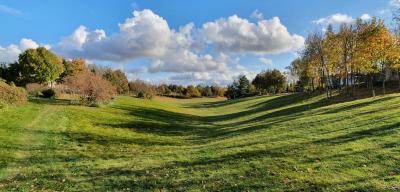Description
The activities were developed in young and vibrant neighborhood Pilaite - a part of a capital city Vilnius, Lithuania. The objectives of citizen engagement activities were to raise awareness, expand ecological discourse and consolidate the capacities of local community to strengthen local biodiversity.
Citizen engagement process was implemented using a holistic approach and different mapping tools. The whole process was structured into three phases: (i) Knowledge gathering & raising awareness, where interviews with the main stakeholders and survey about the social structure of Pilaite were implemented; (ii) Knowledge sharing and constructive dialog, where exploratory hikes and a workshop to share the knowledge and make common decisions were implemented; finally, (iii) Empowering for discussion and co-creation, during which trees and shrubs planting community event was carried out.
More than 300 people of different age groups participated in the activities. Administration of Pilaite eldership experimented with the new forms of public engagement that allowed them to build relevant capacities and skills.
This project proved that the leadership of local authorities is the main prerequisite for a successful citizen engagement process.
When and Where
Policy Context
Participants
Methodologies
• Meetings (1-3 hours long) with the representatives of Vilnius municipality and Pilaite eldership specialists were implemented in the very beginning of the project to discuss our aims and coordinate the actions. Although a meeting is not a straightforward citizen engagement method, however, we see it as a complex tool which serve as a space for knowledge exchange, discussions, co-creation and decision making. The meetings helped us to find a common understanding and agreement for aligning our actions with the needs of municipality.
• Interviews and survey (including open questions) to explore the narratives, existing environmental issues and needs of local community.
• Live workshop during which presentations, discussions, graphic facilitation (with Sticky Notes, maps, etc.) were used to express and exchange the opinions and to make the decisions.
• Exploratory hike (Guided tour) as experiential guided tour included mapping of different species using actual (paper) plans of the territory and a mobile application iNaturalist (Citizens science methodology). Actual maps of the territory were also used to learn about the landscape and relief of the territory. Meter was used to measure different objects, like the girth of a tree trunk or river depth. Every person had a different role and responsibilities during the walk, like taking notes, measuring, etc.
• Action in situ – an actual collaborative trees and shrubs planting activity in several locations that were selected during the workshop. People were provided with seedlings, shovels and watering pots.
Impact
• More than 70 people were introduced to citizens’ science tool iNaturalist and the data collected via this instrument enlarged significantly: more than 45 new observers and more than 400 observations appeared in the period of 3 months.
• Via open questions of our survey inhabitants of Pilaite could express their understanding about biodiversity in their living environment and get familiar with sources of information as well as greening possibilities provided by Vilnius Municipality. Thus, we not only asked the questions during the interviews and the survey, but we also provided a lot of information.
• Pilaite eldership (smallest administrative unit in Lithuania) and especially its administration had an opportunity to experiment with new forms of public engagement and to build some capacities and skills related to citizen engagement.
• Most active and environmentally minded inhabitants of Pilaite had an opportunity to meet, talk, share and act together, thus, these actions enriched and expanded the existing activities of local community.
• Knowledge about the social structure, citizens’ needs, ecosystems and ways of local decision making in Pilaite was gathered collectively and shared among the community and its members.
Assessment
2. The process might go not according to your plan as you might not know well about the local community, its needs and activities.
3. Don’t be too optimistic regarding to the other ongoing activities and do not expect to contribute to them and collaborate during your own project. The ongoing projects have their own plans, timetables and emerging issues, which means that collaboration might not work according to your initial idea.
2. Survey well the area and its people before starting any engagement activity.
3. Make sure there is a leadership of local authorities as their presence is essential for a successful citizen engagement process.
4. During the process you can be more successful when implementing common and jointly generated ideas with the local community rather than contributing or accommodating to an ongoing project.
